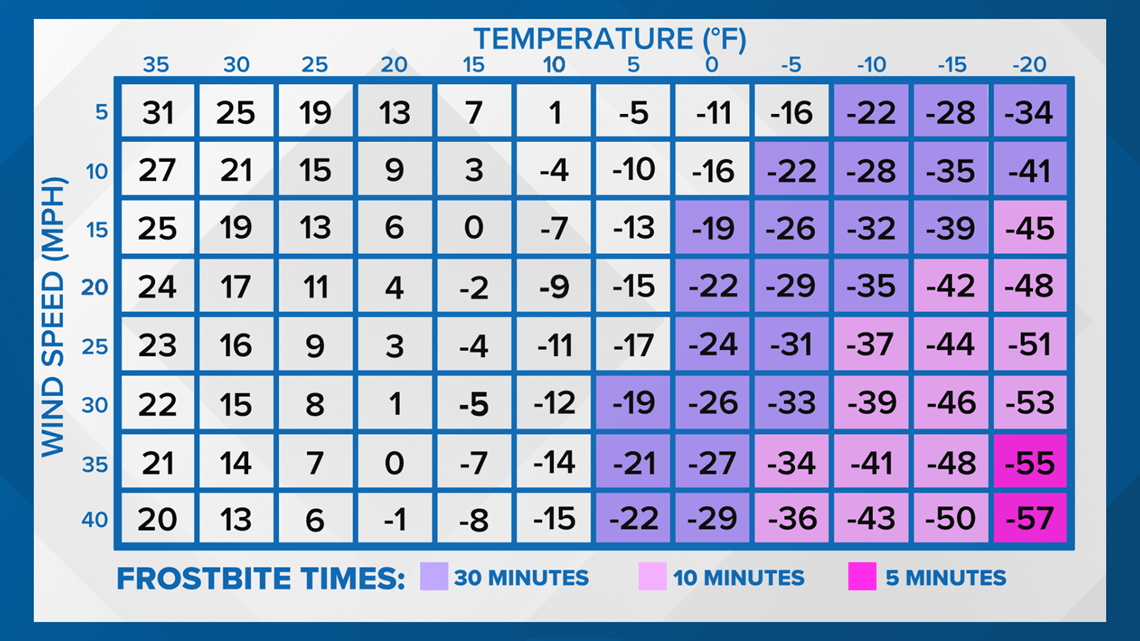DES MOINES, Iowa — "It's not the cold, it's the wind!"
Let's be honest. Even lifelong Iowans are guilty of saying that statement at least once or twice every winter.
Even though the phrase has in some ways become a laughing point among Midwesterners, there's surprisingly quite a bit of truth behind it.
Each winter, meteorologists mention the wind chill nearly as much, if not more, than the actual temperature.
This value is especially important because the combination of wind and cold temperatures can lead to frostbite, hypothermia, or in extreme cases, death.
The human body naturally loses heat through a heat transfer process called convection.
When the wind is calm, that heat remains close to the human body, helping us stay warmer. As a result, when the wind is calm outside, the wind chill is equivalent to the measured air temperature.
On the other hand, when it's windy, the moving air breaks up that existing layer of warm air.
The wind essentially speeds up the heat loss process, making the human body feel colder than the ambient air temperature.
Mathematically, the formula to calculate wind chill is rather complicated.
Wind Chill (°F) = 35.74 + 0.6215T - 35.75(V^0.16) + 0.4275T(V^0.16)
A wind chill chart like this one from the National Weather Service makes it much simpler to visualize and understand.


When the ambient air temperature is 10° and the wind speed is 20 mph, the wind chill is then -9°.
This means your body will lose heat at the same rate as if the air temperature were -9° with calm wind.
When the wind chill drops below -17°, frostbite can develop in just 30 minutes.
The lower the wind chill falls, the more quickly frostbite can form.
In order to avoid frostbite, it's important to stay dry, dress in layers, stay covered, and stay informed.
The National Weather Service issues wind chill advisories and wind chill warnings when a deadly combination of wind and cold air threatens.

